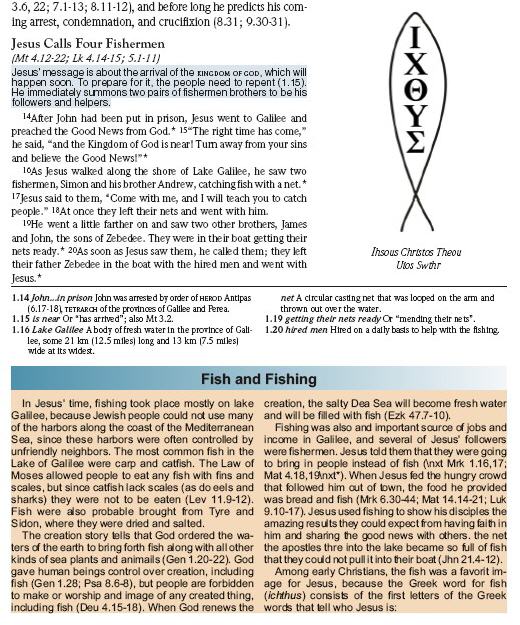Sidebars¶
Sidebars may contain larger sections of topical content, or information for more in-depth study. This content is associated with a general area in the scripture reference text, but not necessarily a specific verse or word. Sidebars are inserted within the study project text using the following general syntax. The boundaries of the sidebar content are defined by an opening and closing marker. The remainder of the sidebar content is written using any USFM title, paragraph, poetry, table, or character marker elements.
\esb
\ms Sidebar Title
<sidebar content>
\esbe
\esb¶
- Syntax
\esb- Type
paragraph (extended note)
- Added
2.1
- Use
Beginning (opening) of the sidebar content section.
sidebar content
All of the text elements which make up the sidebar content. Refer to the documentation on using standard USFM title, paragraph, poetry, table, or special text marker elements.
Sidebars normally begin with an \ms marker, used for providing a title to the sidebar content.
Illustrations can be added to sidebar content sections using the USFM \fig …\fig* marker.
\esbe¶
- Syntax
\esbe- Type
paragraph (extended note)
- Added
2.1
- Use
End (closing) of the sidebar content.
Note
Important: The normal USFM syntax for other note or character type markers which define content boundaries is to close the content section using a marker which is identical to the opening marker plus an added asterisk (e.g. \f …\f* or \ef …\ef*). The syntax for sidebar content does not follow this pattern. The closing marker is unique (\esbe). This is necessary because the content of a sidebar contains many additional paragraph style types (and all other note types with content boundaries only contain character styles).
Text and Formatting Samples
Mark 1 (CEV Learning Bible)
\v 18 At once they left their nets and went with him.
\esb \cat History\cat*
\ms Fish and Fishing
\p In Jesus' time, fishing took place mostly on lake Galilee, because Jewish people
could not use many of the harbors along the coast of the Mediterranean Sea, since these
harbors were often controlled by unfriendly neighbors. The most common fish in the Lake
of Galilee were carp and catfish. The Law of Moses allowed people to eat any fish with
fins and scales, but since catfish lack scales (as do eels and sharks) they were not to
be eaten (\xt Lev 11.9-12\xt*). Fish were also probably brought from Tyre and Sidon,
where they were dried and salted.
...
\p Among early Christians, the fish was a favorite image for Jesus, because the Greek
word for fish (\tl ichthus\tl*) consists of the first letters of the Greek words that
tell who Jesus is: \fig Christian Fish Image|christfish.jpg||||Ihsous Christos Theou
Uios Swthr|\fig*
\esbe
\p\v 19 He went a little farther on and saw two other brothers, James and John,
the sons of Zebedee.
